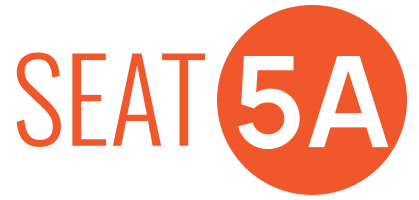Maximizing Business Travel Write-offs: A Seat5A Frequent Flyer’s Guide

Understanding Your Tax Home

When I first started traveling for work, I assumed my tax home was the place where I received the most mail. It turned out that the IRS defines a tax home based on where you conduct most of your business. So, if you split your work between a headquarters in one state and video calls from another, the location that sees the majority of your billable hours can determine your tax home. According to a 2024 update from the IRS, focusing on the exact physical site of your core work activities is essential for establishing a proper tax home.
I’ve seen fellow frequent flyers struggle with this concept when their personal residence is far from where their primary office stands. In one instance, a colleague racked up expenses traveling for conferences from her family home in a different city. She later realized she had neglected to record which location was actually her main place of business. The key lesson? Identify where you do most of your work—and keep consistent documentation that proves it, such as client schedules or logs of work-related tasks.
Getting your tax home right sets the stage for proper deductions. You’ll also need to be mindful of how your lodging, flights, and local transportation align with that location. If you’re regularly working in multiple states, consider using a professional tax advisor or specialized software to ensure you’re claiming the correct home base. Staying organized on this front can spare you from stressful IRS follow-ups later.
What Qualifies as a Business Trip?

Business trips must have a primary work-related purpose, with the majority of days spent on meetings, presentations, or other professional activities. I’ve visited major tech hubs for speaking engagements where my schedule was packed from 8 a.m. to 6 p.m., leaving only evenings for personal sightseeing. Because my work hours outweighed the leisure time, those trips remained fully deductible in the eyes of the IRS.
When travel goes international, staying within IRS rules may require more careful planning. If I fly to a conference in another country and decide to tack on a few personal days, industry data from the Global Business Travel Association suggests that the trip can still remain primarily business if personal activities account for less than 25% of the time away. This distinction is especially relevant for conventions, which can trigger additional documentation requirements—something I’ve meticulously learned to handle by retaining every flight receipt and event confirmation.
Ultimately, proving your business intent depends on written agendas, confirmations of professional events, and a clear time log. Whenever I plan a trip, I also mark my calendar to verify that business activities extend across most days. That way, I have a solid paper trail when filing my taxes.
Deductible Expenses to Know

Most folks understand that airfare, lodging, and ground transportation are fair game as deductions for business travel. However, I’ve noticed people often forget to claim ancillary costs such as checked baggage fees or airport Wi-Fi access, provided these relate directly to work tasks. Recent data from the National Tax Foundation shows that around 18% of business travelers overlook smaller legitimate deductions, collectively leaving millions of dollars on the table each year.
Meals are another hot topic. Generally, you can deduct 50% of your food expenses during business travel, but you’ll want to keep itemized receipts detailing what was purchased and when. Under the Big Beautiful Bill, these deductions have remained a strategic advantage for entrepreneurs, freelancers, and employed professionals alike. I always remind colleagues that family members traveling with you typically aren’t covered, unless they’re actively performing a business function. And if you find yourself on a long “temporary assignment,” you can only claim deductions for the portion devoted to legitimate work activities.
No matter how appealing it might be to deduct premium upgrades for purely personal comfort, the IRS will likely scrutinize lavish expenditures. Stick to what’s ordinary and necessary for your business. In my travels, that usually translates to economy or business class when I’m on assignment, but if my itinerary involves specialized gear or extra luggage for a product demo, I document every detail to justify the additional expense.
Record-Keeping Made Simple

Staying on top of your receipts can be challenging if you’re a frequent flyer with multiple trips per month. I recall spending hours hunting for old digital receipts until I started using a reliable expense-tracking app. According to IRS Publication 463, well-organized records are essential for satisfying tax requirements and minimizing audits or inquiries.
Personally, I keep a digital folder for each trip that includes airfare invoices, hotel bills, and conference schedules. Whenever I combine business with personal time, I highlight the day or hour blocks devoted to non-work activities. This helps me prorate those expenses accurately, ensuring I don’t deduct more than what’s permissible.
Strive for transparency in all your records. If you took a day off to explore a city after wrapping up meetings, label it clearly so that you don’t accidentally write off personal outings as business. Honesty and thoroughness have saved me countless headaches when tax season rolls around.
Top Tools for Hassle-Free Tax Prep

In my experience, well-chosen tools streamline the entire process. Bench‘s combination of intuitive bookkeeping software and human support allows me to sync travel expenses in real time. If you’re self-employed or juggling unpredictable travel schedules, it’s a game-changer. I’ve also tried TurboTax, which provides guided prompts for each possible write-off category, making it a solid choice for filers who prefer a do-it-yourself approach.
When I’m uncertain about international travel rules or the specifics of foreign conventions, I’ll check Publication 463 again or consult a specialized tax advisor. Professionals can spot red flags and ensure you’re not missing out on niche deductions like airline lounge memberships used for private client meetings.
The convenience of modern finance platforms, combined with expert guidance, ensures that compliance and maximum refunds go hand in hand. For a busy traveler, that’s peace of mind you can’t put a price on (although the IRS sure can!).
Final Thoughts

Embracing the nuances of tax-deductible travel can significantly boost your bottom line, provided you stay informed and document everything properly. Over the years, I’ve come to realize that methodical preparation and a healthy understanding of IRS guidelines are the real secret to a seamless tax season.
The biggest takeaway is that success lies in balancing your passion for new horizons with meticulous record-keeping. That way, every flight can be a strategic investment in your professional future without sacrificing the thrill of exploring the world.
Amelia Yeaher’s Take
From my perspective, travel is more than a ticket to see new places—it’s an opportunity to dive deeper into my field of expertise. Keeping tabs on expenses and following the IRS blueprint might feel mundane, but it also fosters a certain freedom. When you manage your deductions responsibly, you allow yourself to pursue business growth without financial worry weighing down your wings.
By weaving together strategic planning and genuine passion, you create a personal flight path that elevates both your professional endeavors and your personal sense of adventure.
Seat5A is your launchpad to discover more inspiring travel insights.






